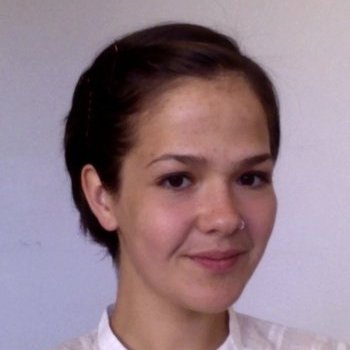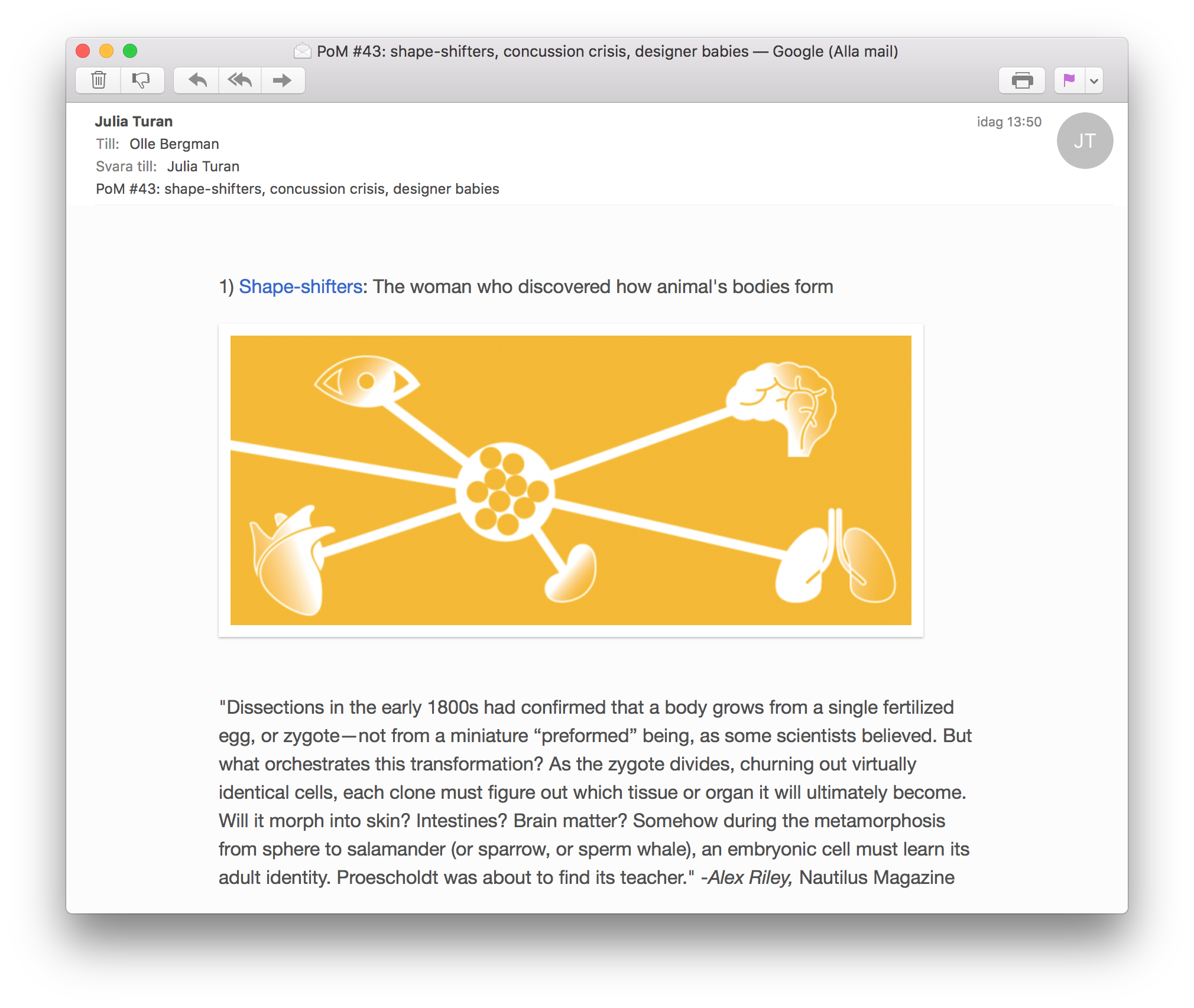How to use a mailing list to present science stories—and give your readers “Piece of Mind”
Julia Turan, neurobiologist with a passion for science communication, has chosen a special format to present worthwhile science stories: a mailing list.
Julia, who comes from Illinois and studied neurobiology at Stanford, is currently completing an MSc in Science Communication and Public Engagement at the University of Edinburgh. Every week she chooses five science stories and distributes them to her subscribers with the help of the email service Tiny Letter. By picking some really good quotes from the original text, she helps the reader get the bottom line from each piece at a glance.
 Hi Julia! Tell us about the ‘Piece of Mind’ newsletter and how you got the idea!
Hi Julia! Tell us about the ‘Piece of Mind’ newsletter and how you got the idea!
I first heard of the concept of newsletter emails from a science communicator and close friend of mine, Nicholas Weiler, who creates his own such newsletter called ‘Method and Madness’. I quickly learned that this was a “widespread” concept in the science communication world and within a week I had subscribed to the newsletters of some of my favorite science communicators, such as Ed Yong, Virginia Hughes, Carl Zimmer.
News websites and blogs also use similar systems of a weekly or monthly email to which people can subscribe. The difference with TinyLetter, the platform I use, is that it stands alone. It allows you to craft an email that anyone can subscribe to. You can link to articles in your email, the way that I do, but you can technically just write original content into the email and call it a day.
For my weekly newsletter, ‘Piece of Mind,’ I choose 5 or 10 (depending on how motivated I am feeling in a given week) long-form articles that feature scientific research or ideas in a thorough, captivating, and in-depth way. The focus of the articles is biology, which this includes psychology, neuroscience, environmental science, medicine and more.
More important than the topics is the style of articles I choose. Although short articles that present one research study are common and can be well written, I avoid these to encourage readership of longer pieces that leave room for storytelling and more in depth critical thinking.
Why should your newsletter matter to the young scientist?
More than my particular newsletter, I would say that the format of subscription-based emails should matter to young scientists. As we know, the Internet and social media are rapidly changing how we communicate and present information. I wouldn’t say that these emails are part of this innovative trajectory so much as striking a nice balance between old and new.
Emails, while not being replaced, are a form of digital communication that is older than many of the emerging ones. I wouldn’t even say that subscription-based emails are new either. In fact, if the grow in popularity, this would be seen as a return to email as a form of dialogue beyond personal communication.
The beauty of this format is it also balances personal and public. Since you decide to subscribe to the emails, and you receive them along with maybe a few hundred other people, you feel a part of a group or community.
Calling these emails ‘communication’ might feel like a misnomer. After all, readers aren’t responding. If anything, it is one-way communication. It does allow subscribers, especially those who regularly read several newsletters, to be well read. In addition to articles you might browse yourself, you now have the browsing capability of other people who you trust to provide worthwhile content.
Give three pieces of advice to the science or tech person who wants to use an email list to disseminate science!
- Provide variety but also a focus: I mentioned that the type of articles I feature is more important to the style than the focus. However, establishing a general focus is important to keep readers coming back because they are generally interested in your choice of articles.
- Self-motivation: Simply put, creating weekly or monthly emails can be a way to make sure you are staying up to date on areas of interesting, reading newly published articles each week. Creating and sticking to your own deadlines can even be useful skill in other parts of your life.
- Don’t be afraid to branch out: Both with topics and news sources, use your newsletter as a way to tap into areas you are less familiar with and news sources that you may not have read yet (but are reputable of course). As a way to encourage myself to take this advice, I am testing out a new feature with ‘Piece of Mind’ where readers can send me requests for topics. I will attempt to find current, interesting articles on the topic for them. I am hoping my followers will be keen!
You can reach Julia directly at juliaturan1@gmail.com for any comments or just to get in touch. Feel welcome to subscribe to ‘Piece of Mind’ at www.tinyletter.com/juliaturan and or the page on Facebook at https://www.facebook.com/PieceOfMindNewsletter/?fref=ts.
- Claire Price of Crastina receives outreach award from Royal Society of Biology - October 25, 2020
- Agile Science student project at Brussels Engineering School ECAM: “We can’t wait to try it again!” - August 28, 2020
- Create an infographic in the Lifeology SciArt Infographic Challenge - June 16, 2020
- Adam Ruben – The scientist that teaches undergraduate students comedy - March 27, 2020
- Sam Gregson, Bad Boy of Science: “Comedy helps to bridge the gap” - March 10, 2020
- The Coolest Science Merchandise of 2019 - December 16, 2019
- Science Media Centre (UK) offers guide on dealing with online harassment in academia - November 26, 2019
- Agile project management taught to students and researchers at Karolinska Institutet - September 20, 2019
- Stefan Jansson: Improve your credibility! (Crastina Column, September 2019) - September 6, 2019
- The People’s Poet: Silke Kramprich, tech communicator - August 31, 2019





Leave a Reply
Want to join the discussion?Feel free to contribute!